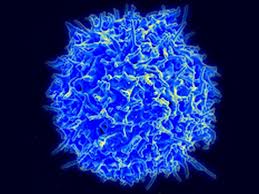Although antiretroviral therapy improves the health of HIV infected individuals, current therapies are still unable to cure infection. Furthermore, it has become clear that antiretroviral therapy does not completely restore health, leaving treated HIV-infected individuals at increased risk of cardiovascular disease, neurological disorders, and other health issues. Therefore the need to develop therapies that are able to cure HIV remain of significant importance. It is thought that, to be successful, curative strategies will need to combine a means to flush the virus out of the latently-infected cells in which it hides, with a means to kill these unmasked targets. A front-running approach proposes to use a class of drugs called histone deacetylase inhibitors (HDACis) as flushing agents, with cytotoxic T-lymphocytes (CTL, or killer T-cells) to purge viral reservoirs. This study however uncovered an unexpected negative interaction between these two agents, whereby HDACis was shown to suppress the ability of CTL to kill HIV-infected cells. Thus indicating the potential limited efficacy of combining CTL with HDACis in flush and kill approaches to HIV eradication, and should be considered in the prioritization and optimization of potential curative strategies.












